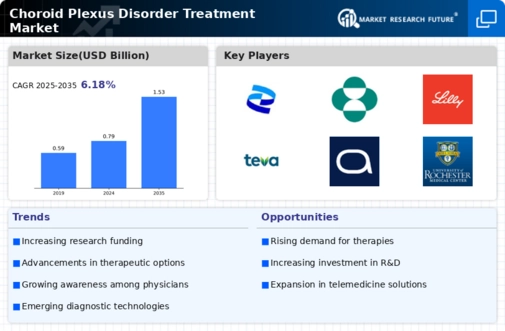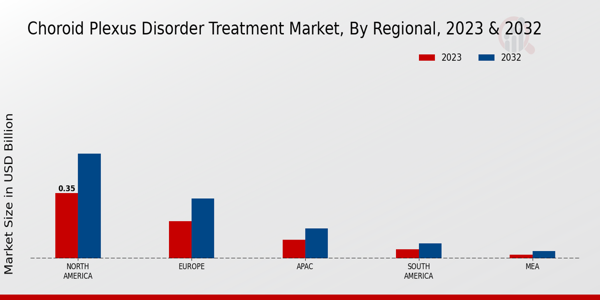Market Growth Projections
Rising Awareness and Education
The Global Choroid Plexus Disorder Treatment Market Industry is bolstered by rising awareness and education regarding neurological health. Campaigns aimed at educating the public about the symptoms and treatment options for choroid plexus disorders are gaining traction. Organizations and healthcare providers are working collaboratively to disseminate information, which helps in early diagnosis and intervention. This increased awareness is likely to lead to higher patient engagement and treatment adherence, ultimately driving market growth. As more individuals seek treatment, the market is poised to expand significantly, reflecting the growing recognition of neurological health issues.
Regulatory Support and Approvals
Regulatory support and streamlined approval processes are crucial for the Global Choroid Plexus Disorder Treatment Market Industry. Regulatory bodies are increasingly recognizing the need for expedited pathways for innovative treatments targeting choroid plexus disorders. This support not only encourages pharmaceutical companies to invest in research and development but also facilitates quicker access to new therapies for patients. As a result, the market is likely to see a surge in novel treatment options, enhancing the overall therapeutic landscape. The favorable regulatory environment is expected to contribute to the projected growth of the market, aligning with the increasing demand for effective treatments.
Advancements in Medical Technology
Technological advancements play a pivotal role in the Global Choroid Plexus Disorder Treatment Market Industry. Innovations in imaging techniques, such as MRI and CT scans, enhance the diagnosis and monitoring of choroid plexus disorders. Furthermore, the development of minimally invasive surgical techniques has improved treatment outcomes and reduced recovery times. These advancements not only increase the effectiveness of existing treatments but also pave the way for new therapeutic options. As the market evolves, the integration of cutting-edge technology is likely to contribute to a compound annual growth rate of 6.19% from 2025 to 2035, reflecting the industry's dynamic nature.
Growing Investment in Healthcare Infrastructure
Investment in healthcare infrastructure is a significant driver for the Global Choroid Plexus Disorder Treatment Market Industry. Governments and private sectors are increasingly allocating funds to enhance healthcare facilities and services, particularly in developing regions. This investment facilitates better access to diagnostic and treatment options for patients suffering from choroid plexus disorders. For example, initiatives to improve neurosurgical centers and specialized clinics are becoming more common. As a result, the market is expected to benefit from improved patient outcomes and increased treatment accessibility, further propelling market growth.
Increasing Prevalence of Neurological Disorders
The Global Choroid Plexus Disorder Treatment Market Industry is experiencing growth due to the rising incidence of neurological disorders. Conditions such as hydrocephalus, which can be linked to choroid plexus dysfunction, are becoming more prevalent. For instance, the World Health Organization indicates that neurological disorders affect approximately 1 in 6 individuals globally. This increase in cases necessitates effective treatment options, thereby driving demand within the market. The projected market value of 0.79 USD Billion in 2024 reflects this trend, with expectations of reaching 1.53 USD Billion by 2035, indicating a robust growth trajectory.
























